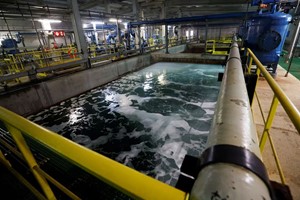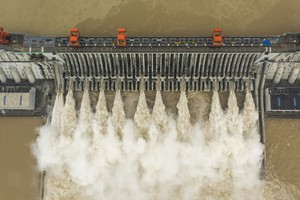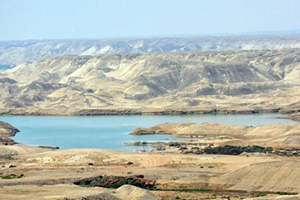Lakes provide critical resources for humankind. The interaction of optically active constituents in water with solar radiation makes the lakes on the Earth colorful.
Compared with a single water quality parameter, lake water color can reflect the comprehensive state change of lake environment. In general, lake color is related to productivity, water quality, and ecological state. Hence, the influences of climate and human activities on lake environments can be reflected in water color, to some extent.
Researchers led by Dr. Cao Zhigang from Prof. Ma Ronghua's group at the Nanjing Institute of Geography and Limnology, Chinese Academy of Sciences, along with their collaborators, conducted a comprehensive examination of color in 2,550 Chinese lakes from 1984 to 2021. They revealed the spatial and temporal patterns of shifts in lake color as well as their relations to climate and human activities. Their findings were published in Geophysical Research Letters on April 25.
"In the past 40 years, the blue lakes in western China became bluer, and the green-yellow lakes in eastern China shifted to greener colors," said Dr. Cao.
The researchers found that declines in visual wavelength were widespread whether in western China's blue lakes or in eastern China's non-blue (green and yellow) lakes. The decrease in visual wavelength of color was found in 1,723 lakes (68%) (mean changing rate: -8 nm/decade). Lakes in the Tibetan Plateau had larger declines in wavelength than lakes in other areas.
"Climate and human activities varied in different areas of China. Thus, controls from climate and humans on changing patterns of lake colors are heterogeneous across China," said Prof. Ma.
Most lakes in western China (e.g., Tibetan Plateau) are blue. The bluer color is mainly related to the higher temperature and rainfall, which also resulted in lake expansion and elevated water clarity there.
The lakes in eastern China (e.g., Yangtze River plain) are often "green-yellow." With the decrease in wind speed over the past decades, the resuspension of sediments, which usually relates to lake turbidity, was weakened. Likewise, more forest and grassland around the lakes reduced substances flowing into them. These processes reduced sediments in surface water and made the lake color shift to a green direction. In Lake Taihu and Chaohu, where the cyanobacterial blooms frequently break out, the trends of "greener" colors are more significant.














